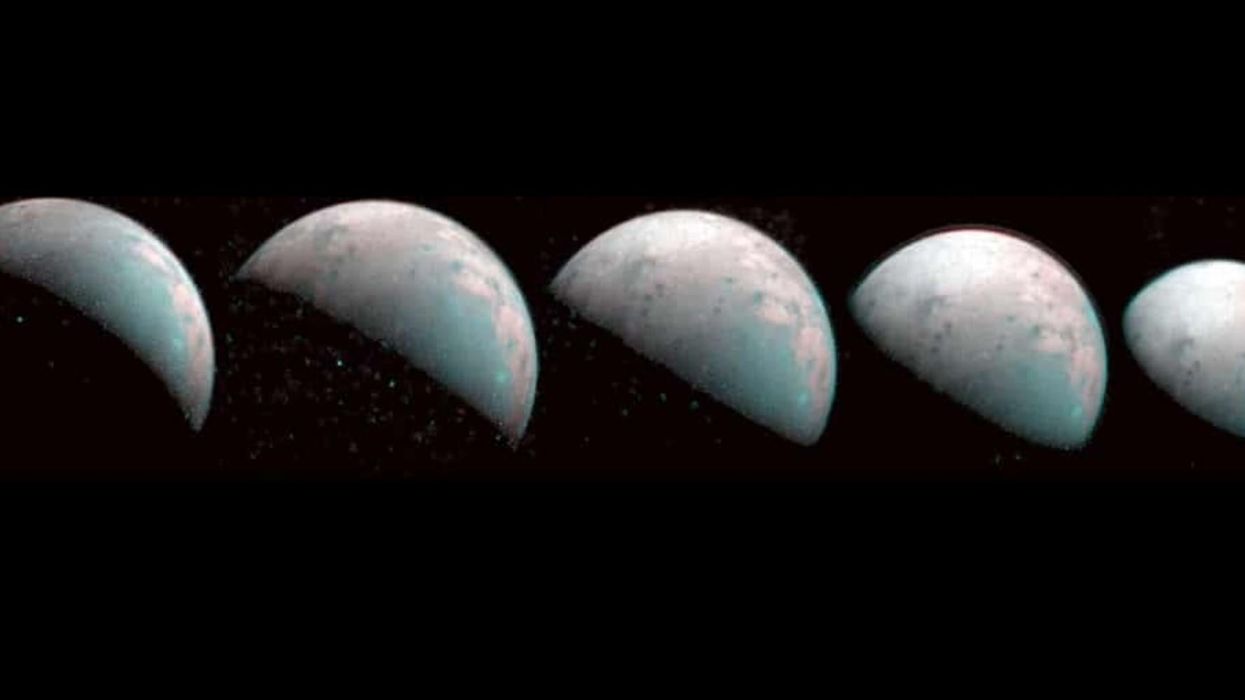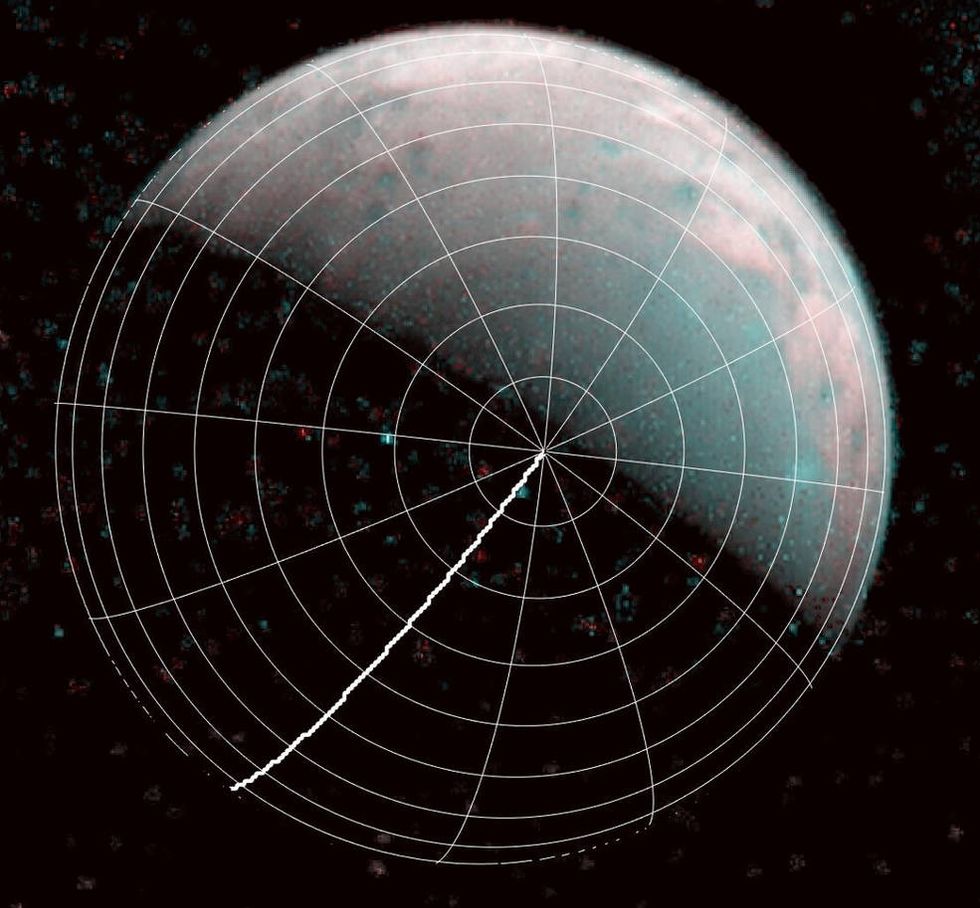
NASA’s Juno spacecraft has taken it’s first images of the largest moon orbiting around Jupiter.
Ganymede, discovered by Galileo Galilei in 1610, is one the 79 identified moons spinning around the big planet and is the ninth-largest object in the solar system and is larger even than the planet Mercury.
As of today, we can all have a closer look as Juno captured Ganymede’s North Pole now that there is technology to see it in more detail.
Now for the first time, the Jovian – a term that refers to the Jupiter family, which includes Jupiter, Saturn, Uranus, and Neptune – Infrared Auroral Mapper (JIRAM) instrument of NASA’s Juno spacecraft snapped the first images of Ganymede’s northern frontier.

Earlier pictures, captured during a Jupiter flyby on December 26, 2019, gave us the first infrared mapping of the north pole of the gigantic moon.
The images show an unusual form of ice exists at the pole, a type that we don't see here on Earth, because the magnetic field filters particles from the sun – basically plasma – towards it.
Without a decent atmosphere, it's essentially raining plasma down on Ganymede's ice.
According to NASA, on Earth, the magnetic field provides a pathway for charged particles from the Sun, or plasma, to enter our atmosphere and create aurora – like the Northern and Southern lights – seen in the polar regions.
This isn’t the last we will hear from that side of the solar system.
The Juno discovery is, for now, the only one to explore over there – but might change very soon as the European Space Agency‘s Jupiter Icy moons Explorer mission is scheduled to begin a three half a year exploration of Jupiter’s turbulent atmosphere in 2030.













